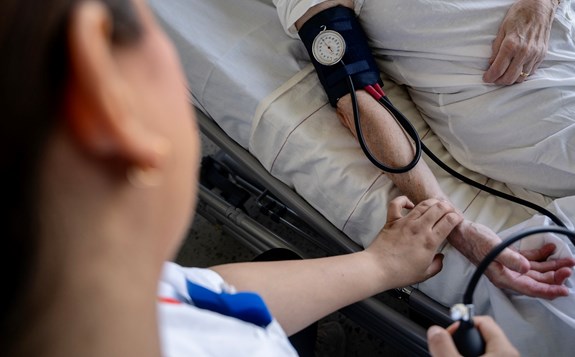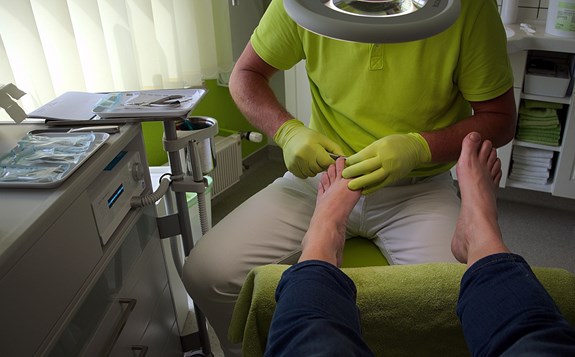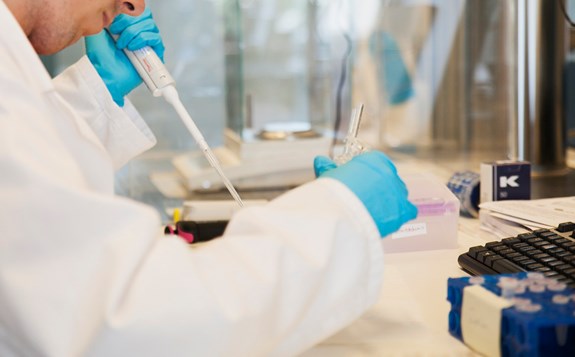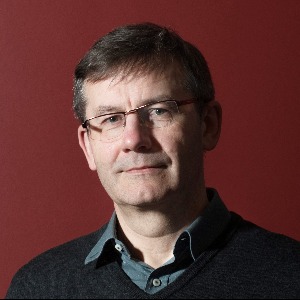We use cookies on this website. Cookies help us deliver the best experience on our website. Read about cookies.
-
- Education
- Education
- Programmes and courses
- Applications and admissions
- Tuition fees
- Scholarships
- Exchange studies at Malmö University
- Study Guidance
-
- After admission
- After admission
- Moving to Malmö
- Pre-orientation
- Arrival guide
-
- About studies at Malmö University
- About studies at Malmö University
- Why choose Malmö University
- Understanding university studies
- Connect with our students
On the page -
- Research
- Research
-
- Doctoral studies
- Doctoral studies
- Doctoral courses
-
- Doctoral schools
- Doctoral schools
- Adaptation of urban space through sustainable regeneration
- ComBine
- Culturally Empowering Education through Language and Literature
- Education, Learning and Globalisation
- Finding ways in a time of great future challenges (FinnFram)
- Swedish National Graduate School in Science and Technology Education Research
- Learning in Multicultural Societal Contexts
- Pedagogy and Vocational Skills
- Relevancing Mathematics and Science Education (RelMaS)
- Sustainable Movement Education
- The National Research School for Professionals in Social Services
- Research subjects
-
- Research centres
- Research centres
- Biofilms Research Centre for Biointerfaces
- Citizen Health
- Imagining and Co-Creating Futures
- Institute for Urban Research
- Malmö Institute for Migration Studies
- Literacy and Inclusive Teaching
- Centre for Work Life Studies
- Sustainable Digitalisation Research Centre
- Centre for Sexology and Sexuality Studies
-
- Research publications
- Research publications
- Search for research publications in Diva
- Malmö University Press
- Research events
- Participate in a research study
- Coffee Break Quiz
On the page -
- Collaboration and Innovation
- Collaboration and Innovation
- Innovation
- Collaboration with students
-
- Collaborate with researchers
- Collaborate with researchers
- Labs and facilities
- Culture collaboration
- Support Malmö University
- Alumni & Friends
On the page -
- About us
- About us
-
- Faculties and departments
- Faculties and departments
-
- Faculty of Culture and Society
- Faculty of Culture and Society
- Department of Global Political Studies
- School of Arts and Communication
- Department of Urban Studies
-
- Faculty of Education and Society
- Faculty of Education and Society
- Department of Childhood, Education and Society
- Department of Sports Sciences
- Department of Culture, Languages and Media
- Department of Natural Science, Mathematics and Society
- Department of Society, Culture and Identity
- Department of School Development and Leadership
-
- Faculty of Technology and Society
- Faculty of Technology and Society
- Department of Computer Science and Media Technology
- Department of Materials Science and Applied Mathematics
- Faculty of Odontology
- University Dental Clinic
-
- Find and contact Malmö University
- Find and contact Malmö University
- Visit Malmö University
-
- News and press
- News and press
- Graphic manual
- Map of the buildings (Google Maps)
- Merchandise
- Supplier information and invoice management
- Whistleblowing
- Management and decision-making paths
-
- Malmö University's strategy 2030
- Malmö University's strategy 2030
- Sustainability
- Widened recruitment and participation
- Quality assurance work at the University
-
- Malmö Academic Choir and Orchestra
- Malmö Academic Choir and Orchestra
- Student work – video pieces
-
- Annual Academic Celebration
- Annual Academic Celebration
- Academic traditions
- Meet our new professors
- Meet our new doctors
- Honorary doctors
- The University in a troubled world
On the page
Biofilms Research Centre for Biointerfaces
for Biointerfaces
Biofilms Research Centre for Biointerfaces is a multidisciplinary research centre at the interface between life and material sciences. Our vision is to shape novel solutions for improved health through excellent science in close partnership with industry.
Major research activities
The centre’s activities focus on a wide range of phenomena associated with biointerfaces. The practical applications of the research are numerous and range from non-invasive diagnostics to disease prevention and novel treatments. Current major projects include the profile Biobarriers, the industry research school Combine, the innovation effort within Open Lab South, and water research supported by Sandberg Development.
News and events
Our research
Researchers at the centre include a wide range of experts from the fields of chemistry, biochemistry, materials science, cell and molecular biology, mathematics and microbiology. These experts, with overlapping interests, are advancing research in three core areas:
- biobarriers and pharmaceutical design;
- biofilms at interfaces; and
- smart material at interfaces.
Biofilms at interfaces
Microorganisms have a strong tendency to associate with surfaces and form adherent microbial communities, known as biofilms. Within this field, we study mechanisms by which bacteria adapt to and survive in the biofilm environment, as well as studying the salivary and mucosal barrier.
The research in detail
Biotherapeutics
Bacterial proteases are a driving force for the inflammatory responses involved in both periodontitis and cardiovascular disease. We aim to develop advanced technological tools based on an array of biomarkers (bacterial proteases and inflammatory mediators) to aid the identification of individuals at risk of severe alveolar bone loss disease and the prediction and treatment of periodontal disease and associated inflammatory disorders.
Oral microbiology
In any environment, macromolecules and micro-organisms have a strong tendency to associate with surfaces and form adherent microbial communities, so-called biofilms, which are now recognised as the cause of most infectious diseases. Our goal is to understand the mechanisms by which oral bacteria acquire virulence in biofilms and to identify key points of intervention. We anticipate that our results will contribute to the development of future antimicrobials that target disease-inducing properties in biofilms rather than specific microorganisms.
Saliva research
Our main focus is the study of salivary pellicles — the film of nanometric dimensions that forms immediately upon contact of saliva with almost any type of surface. Pellicles play an important role in the maintenance of oral health, as they protect and lubricate oral surfaces. We aim to better understand the mechanisms underlying salivary lubrication. We also study the mechanisms underlying the protection offered by salivary pellicles against dental erosion and how this can be improved by complementing acidic beverages with anti-erosive compounds.
New methods and instruments
We are developing instruments that will allow structural studies of very thin and soft films under load and shear using neutron scattering and reflectometry. This is being carried out in collaboration with ESS and the two other big neutron facilities in Europe. We expect that this will be useful to apply in a broad range of fields, as soft-matter thin films are ubiquitous both in natural and artificial systems, for example, in the macromolecular layers that are often found at the solid/liquid interface in colloidal dispersions and biomedical implants.
Smart materials at interfaces
Smart materials at interfaces include bioelectronics (biosensors and biological power sources), oral implants and artificial biomimicry with biological applications.
The research in detail
Artificial biomimicry
Biomimicry (defined as the imitation of life or nature) is used in biomedicine and biotechnology to develop novel treatments and diagnostic methods.
We focus on two major areas within biomimicry:
- The first being the development of novel diagnostic tools for cancer.
- And secondly, biomimetic systems for a better understanding of the onset and treatment of diseases, including atherosclerosis and bacterial infections.
Finding new and better ways to diagnose and treat cancer is one of the pressing tasks for researchers. Early diagnosis, where the cancer is still curable, is therefore crucial. This emphasises the need for sensitive, robust and affordable diagnostic tools that can sense the cellular state, commonly in the form of tumour-specific protein markers, early on in the process. We are developing and using molecularly imprinted polymers, plastic antibodies and other smart materials to detect and sense previously inaccessible tumour markers and discover novel disease biomarkers.
Biodegradable implants
The treatment of bone fractures and bone defects often requires the placement of metal plates or screws that joins the broken bones and allows them to heal. They are typically made of titanium or stainless steel, which functions well to stabilise the bone. However, as these plates or screws remain in the body, they can cause pain or other complications and often require the patients to undergo more surgery to remove the metal. We are studying implants made of magnesium – a metal with good mechanical properties – because it dissolves in the body over time.
Biosensors and implantable bioelectronics
Research on biosensors and implantable bioelectronics is focussed on development of specific analytical devices and methods for monitoring clinically relevant analytes and biomarkers, as well as the development of potentially implantable electric power devices. It includes synthesis and characterisation of nanomaterials, development of novel sensing and power generating principles, as well as assessment of biosensor and biofuel cell performance in clinical and implantable situations. Our research strength lies in electrochemical sensors and enzymatic fuel cells. Lately, we have exploited biosensor approaches for the investigation of processes at biological barriers, tested enzymatic fuel cells in human blood under homeostatic conditions, as well as disclosed a new type of bioelectronic device – self-charging biosupercapacitors.
Cancer diagnostics
Finding new and better ways to diagnose and treat cancer is one of the most pressing tasks for researchers today. We use molecularly imprinted polymers to detect, sense and image previously inaccessible tumour markers and discover novel disease biomarkers with the aim of detecting cancer at an early stage.
Mathematical modelling
Scientific computing and simulations of phenomena on micro and macroscopic scales are a field of great scientific importance. General mathematical techniques, such as differential equations, combined with computational methods, allow a very broad range of applications.
Our main focus is on three different areas:
- computational quantum physics;
- modelling of infectious diseases;
- and resonance spectrum for stratified media.
New methods and instruments
In collaboration with MAX IV, we are building sample environments to be used in tomography synchrotron beamlines. This will allow the study of how changes in the ambient conditions affect, for example, the structure and morphology of samples that have synthetic or biological origins. We are also developing methods for monitoring the interaction of formulations that comprise, for example, microparticles with biological barriers. These methods have a clear application in non-invasive drug delivery.
Biobarriers and pharmaceutical design
Biobarriers and pharmaceutical design include pharmaceutical formulation, transdermal and mucosal drug delivery, as well as hydration of biological interfaces, proteins and nanoporous materials.
The research in detail
Biobarriers
We focus on advancing the knowledge of the key physicochemical properties of biointerfaces and how they determine the interactions with biomolecules in solutions. To achieve this, we develop biomimetic systems that aim at mimicking specific biobarriers in an easily producible and reproducible manner. The biobarriers we are interested in include cellular membranes, plant cell walls and blood vessels. Currently, we are applying these biomimetic systems to improve our understanding of the onset and treatment of various diseases such as atherosclerosis and bacterial infections.
Hydration of biological interfaces, proteins and nanoporous materials
The functional properties of biological materials and nanomaterials are strongly dependent on their interactions with the surrounding environment, where the presence of water in the form of liquid or vapour is inevitable. We have a special interest in nanoporous materials, such as mesoporous silica, and we study their hydration, characterisation and interactions with organic molecules and biomolecules. We also study the hydration of carbohydrate materials, such as cellulose. In the drug delivery field, we work with the interaction of solid excipients with water; hydration of proteins; hydration and phase transitions in lipids; and hydration of biological barriers.
Pharmaceutical formulation
In the development of transdermal and topical formulations, it is important to understand how formulation ingredients interact with the molecular components of the skin barrier and thereby influence its macroscopic barrier properties. Our research activities focus on the effects of commonly used excipients and other chemicals, such as penetration enhancers, on the molecular, as well as the macroscopic, properties of the skin membrane. We also investigate how nanomaterials, such as mesoporous silica particles, can be used in controlled release applications. The advantage of mesoporous silica, such as MCM-41 and SBA-15, is that these materials have remarkable properties due to their well-defined structure with tunable pore diameter and narrow pore size distribution, which can be optimised for loading and controlled release of drugs or biomolecules.
Transdermal and mucosal drug delivery
The skin barrier (the stratum corneum) is an effective permeability barrier. Despite this, the skin is an attractive alternative to the oral route for drug delivery because it avoids first-pass metabolic degradation, which can be an important advantage for certain drugs. Two common strategies to overcome the skin barrier for increased transdermal drug delivery are to increase skin hydration and add a penetration enhancer. Our research focuses on how hydration affects skin permeability, with and without penetration enhancers. Our approach is to combine several experimental methods to obtain both macroscopic and molecular-scale information on how hydration and penetration enhancers influence the stratum corneum.
Biobarriers
Biobarriers - Health, disorders and healing
Biobarriers - Health, disorders and healing
Disorders of biological barriers such as skin and mucosa affect everyone from infant to elderly, and dermatological findings are often the first manifestations of systemic disease. It is becoming more and more evident, that healthy biobarriers depend on the microbiota, physicochemical properties of mucosa or stratum corneum structure (the dead or less biologically active tissue), and an adequate immune defense mainly residing in the viable tissue. In collaboration with industry, we are looking for solutions to improve the health and healing of biobarriers.
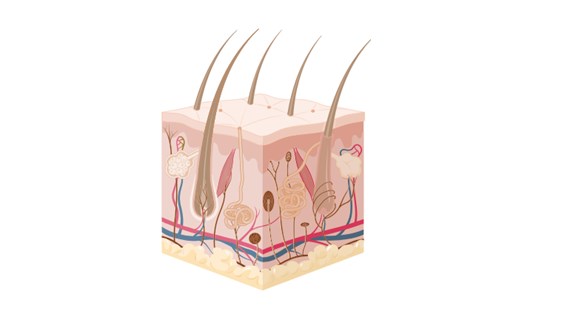
Water Science Lab
New focus: Water in life and materials
New focus: Water in life and materials
Water is fundamental to life, yet its interactions at the molecular level remain a complex scientific frontier. As part of a new research direction at the centre, researchers explore how water interacts with biomolecules, surfaces, and nanomaterials. This work supports sustainable materials, cleaner technologies, and improved drug delivery – advancing solutions to global health and environmental challenges.

Researchers, publications and projects
We are always interested in new collaborations with academia and industry. Please contact our researchers if you have any questions.
-
2026 | Article in journal
Structure and morphology of vesicular dispersions based on novel glycophospholipids with various monosaccharide head groups
Nikolina Barchan, Jennifer Gilbert, Antara Pal, Tommy Nylander, Patrick Adlercreutz
-
2026 | Article in journal
Quantifying protein aggregate concentration through electrochemical oxidation of thioflavin T
Narvydas Dėnas, Povilas Virbickas, Aušra Valiūnienė
-
2026 | Article in journal
Two-step digestion pathways of hydrogels from pea proteins
Davide Schirone, Anna Maischberger, Francesca Dessì, Lena Merten, Negar Rahdar, Fátima Herranz-Trillo, Olga Matsarskaia, Cy M. Jeffries, Rita Del Giudice, Felix Roosen-Runge
-
2026 | Article in journal
Label-free and real-time synchronized monitoring of extracellular matrix proteolysis using quartz crystal microbalance and nanoplasmonic sensing with morphological validation by atomic force microscopy
Michal Szczepanczyk, Juan F Gonzalez-Martinez, Tautgirdas Ruzgas, Sebastian Björklund
-
2026 | Article in journal
Structural, functional and biochemical characterisation of apolipoprotein(a)-containing low-density lipoproteins
Yubexi Correa, Favour Nzekwe, Tigist Wodaje, Jonas Brinck, Martin Jansen, Clement Blanchet, Jan Skov Pedersen, Rita Del Giudice, Marité Cárdenas
-
2025 | Article in journal
Surface interaction of Ni based electrocatalyst with hydrogen peroxide
Nabi Ullah, Denis Music, Agata Blacha-Grzechnik, Vladimir Ivanovski, Katarzyna Ranoszek-Soliwoda, Jarosław Grobelny, Dariusz Guziejewski
-
2025 | Article in journal
Editorial: Advancements in translational models: bridging basic infection research and clinical applications
Artur Schmidtchen, Aftab Nadeem, Haris Mirza, Karl Wallblom, Deepak Bushan Raina, Oonagh Shannon, Jitka Petrlova, Manoj Puthia
-
2025 | Article in journal
Proton Nuclear Magnetic Resonance Relaxation in Aqueous Sugar Solutions: Can Low-Field Nuclear Magnetic Resonance Relaxation Measurements Differentiate between "Bound" and "Free" Water?
Vasantha Gowda, Ivan Argatov, Olle Söderman, Vitaly Kocherbitov
-
2025 | Article in journal
Exploring hemoglobin dynamics and scavenging mechanisms in preterm infants and preterm rabbits with cerebral intraventricular hemorrhage
Amanda Kristiansson, Helena Karlsson, Suvi Vallius, Niklas Ortenlöf, Claes Ekström, Katarzyna Wiatrowska, Valérie Verdon, Sandra Mena Perez, Kirsten Guse, Thomas Gentinetta, Markus Brechmann, David Ley, Magnus Gram
-
2025 | Article in journal
Electrochemical (Bio-) Sensors in Biological Applications—2nd Edition
Sergey Shleev, Cécilia Cristea, Nina Dimcheva
-
Research project
Biobarriers – Health, disorders and healing
-
Research project
Biomimetic SARS-C oV-2 receptors as host cell models, diagnostic tools and for antiviral research
-
Research project
Biomimetic sensors for monitoring of Norovirus and SARS-CoV-2 genetic variants in water
-
Research project
Correct medication list at care transitions
-
Research project
Enzymatic activity in oral biofilms – biotechnological applications and putative predictive biomarkers for oral health and disease
-
Research project
HEALTHCOM- Healthy communities in ageing societies – participatory research with elderly immigrants and refugees living in a Nordic...
-
Research project
Hanseatic Life Science Research Infrastructure Consortium (HALRIC)
-
Research project
Hierarchical nanoengineered assemblies of titania (Hi-NEAT)
-
Research project
Human mucosae: from molecular understanding to tissue engineering and novel therapeutic opportunities
-
Research project
Integrating Diet, Environment, and Lifestyle: A Multifaceted Approach to Managing Inflammatory Bowel Disease in Young Adults
-
Research project
Liproprotein structure-function and disease development: from atherosclerosis to covid-19
-
Research project
Modulation of immune responses by biofilm-derived and niche-adapted oral streptococcal populations
-
Research project
Molecular profiling of the host-microbiota interplay in periodontitis
-
Research project
Next generation of cancer models for improved predictivity in drug development – 3D colorectal cell growth with the use of supporting spide...
-
Research project
Professional Education and Sexual Health-PUSH
-
Research project
Simultaneous Scattering and Tribological Investigations of Sheared Thin Soft Matter Films under Low Pressure
-
Research project
Student participation in research teams – Vertically Integrated Projects (VIP) in Biomedical, Criminology and Care Science research
-
Research project
Towards controllable structuring processes of plant seed proteins
-
Research project
Washing and cleaning with purified water grades and the effects of water purity on properties of colloidal systems
-
Research project
Water Science Lab
Platforms
Organisation and Partners
-
Cristina Glad
Chairperson, CEO
C Glad Consulting AB
-
Martina Kvist Reimer
Business Developer at Region Skåne and Owner of Red Glead Discovery
Region Skåne; Red Glead Discovery
-
Sven Frökjaer
Professor Emeritus
Faculty of Health and Medical Sciences, University of Copenhagen
-
Thomas Arnebrant
Professor of Biointerfaces
Fakulteten för hälsa och samhälle, Malmö universitet
-
Ulf G Andersson
CEO
Medeon Science Park & Incubator
Industry partners
- A1M Pharma AB
- Adroit Science AB
- Akzo Noble Pulp and Performance Chemicals AB
- Alligator Bioscience AB
- Amano Enzyme Inc
- ArgusEye AB
- AstraZeneca AB
- BioGaia AB
- Bioglan AB
- Biotage AB
- Bona AB
- Camurus AB
- CapSenze HB
- Chemotechnique Diagnostics AB
- Chromalytica AB
- Corigo AB
Covercast AB
- CR Competence AB
- CTC Clinical Trial Consultants AB
- Dentsply A/S
- Enzymatica AB
- Erco Pharma AB
- Fisher & Paykel Healthcare Ltd
- Galenica AB
- Genovis AB
- GE Healthcare AB
- G&T Septech A/S
- Idogen AB
- ImaGene-iT AB
- IBM Svenska AB
- Iconovo AB
- In vitro Plant-tech AB
- KEMET AB
- Larodan AB
- Lipidor AB
- Magle Chemoswed AB
- MediGelium AB
- Nanologica AB
- Nordiska Dental AB
- Novosense AB
- Novozymes A/S
- Obducat Technologies AB
- Orexo AB
- Pampett AB
- PEAS Institut AB
- Perrigo Nordic AB
- Promimic AB
- Phase Holographic Imaging AB
- Proteome Sciences, UK
- QPharma AB
- ReSyn Biosciences, South Africa
- RISE AB
- RISE Acreo AB
Samsung, South Korea
- Scibase AB
- Siamab Therapeutics Inc
- Simris Alg AB
- Sobi AB
- SoftOx Solutions AS
- Speximo AB
- Stadex AB
- Sterisol AB
- Thermo Fischer, UK
- Timeline Bioresearch AB
- Truly Labs AB
- Truly Translational AB
- Zelmic AB
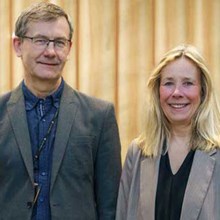
Malmö Neptunigymnasium and BRCB initiate collaboration
A collaboration between the secondary school Malmö Neptunigymnasium and Biofilms Research Centre for Biointerfaces (BRCB) allows students at Malmö Neptunigymnasium to visit various university activities and environments and try out the equipment used by researchers and staff, through a week of...
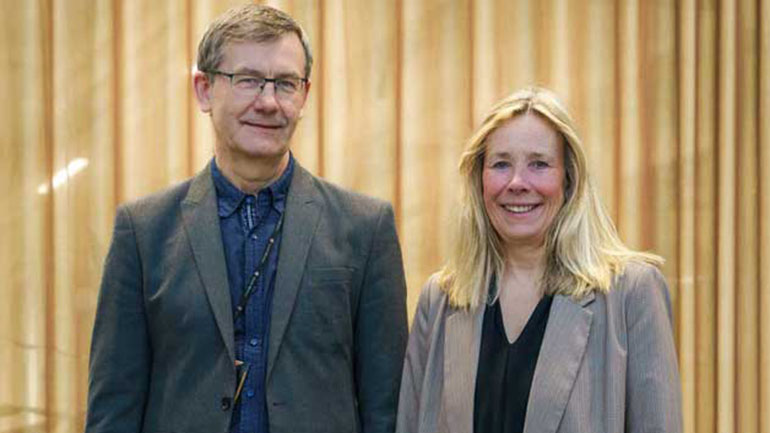
Malmö Neptunigymnasium and BRCB initiate collaboration
A collaboration between the secondary school Malmö Neptunigymnasium and Biofilms Research Centre for Biointerfaces (BRCB) allows students at Malmö Neptunigymnasium to visit various university activities and environments and try out the equipment used by researchers and staff, through a week of workplace learning (WPL).
At BRCB, the focus is on developing new solutions for improved health through cutting-edge science in collaboration with industry. For example, Dr. Atefeh Shafaat has developed wireless biosensors that enable a more patient-controlled system, where infections can be detected much earlier through smart catheters, smart diapers, or smart wound dressings. Linn Piros, project manager at the secondary school and adult education administration, believes this gives students an insight into future healthcare. The plan is to offer ten students WPL placements starting in the spring term of 2025.
'The students here get a unique opportunity to follow research that can influence tomorrow's healthcare', says Linn Piros.
Anneli Schwartz, director of the secondary school and adult education administration, and Tautgirdas Ruzgas, director of BRCB and vice head of the BMV department, met to sign the agreement. The hope is to contribute to future solutions for improved health and competence supply within welfare and societal benefit.
Tautgirdas Ruzgas sees many benefits of the collaboration.
'We want to convey to younger generations what we do and why we exist. The students get to try out different things and feel what it's like in the workplace, which is important. We want to give something back so the younger generation can make an educated choice.'
Anneli Schwartz emphasizes the uniqueness of the collaboration:
'There are many professional roles and contributions to future development, in technology and health. This is something completely new. We remove the one-sided thinking about what career path secondary education programmes should lead to.'
Anneli Schwartz concludes that it is an important day for the Secondary and adult education administration. She explains that the agreement enables collaboration with a field of science they have not previously worked with.
Open Lab South
The underlying principle of Open Lab South is sustainability; equipment should be shared, and its use maximised. At the same time, the ambition is to create a synergy between academia and industry.
Open Lab South consists of four hubs: Biofilms Research Center for Biointerfaces at Malmö University, Division of Food and Pharma at Lund University, SmiLe in Lund, and Medeon in Malmö.
The project started in 2024 and will run until at least 2026. It is a continuation of Open Lab Skåne.
How it works
Open Lab Skåne is built on the competencies found at the three hubs. When a company contacts us, they are forwarded to the area of expertise best suited for the purpose. At Biofilms Research Center, Open Lab focuses on materials science, chemistry and biological interfaces, at Lund University the focus is on food technology, and SmiLe is a life science incubator.
When companies first contact us, we engage in a dialogue about what they need. If we can meet their needs. We then go through practical issues such as costs for instruments, renting lab space and, in general, what they can expect from us.
Companies can also rent lab space or equipment.
So far, 43 companies have joined and are receiving support through the project.

Testimonials about Open Lab
Go Cirkulär started to use Open Lab in 2021. Small companies generally have difficulties getting access to a lab space in Skåne and Open Lab offers us this and allows us to uphold the highest health and safety standards for an affordable price.

Testimonials about Open Lab
Go Cirkulär started to use Open Lab in 2021. Small companies generally have difficulties getting access to a lab space in Skåne and Open Lab offers us this and allows us to uphold the highest health and safety standards for an affordable price.
Working at Open Lab helped Go Cirkulär to get access to technology, tools, and expertise that were key to the company's development.
Irene Atance – CEO & Founder
Go Cirkulär
Go Cirkulär manufactures high-quality skincare products that are upcycled, gender-neutral, and 100 per cent natural.
How did Open Lab work for you?
Go Cirkulär started to use Open Lab in 2021. Small companies generally have difficulties getting access to a lab space in Skåne and Open Lab offers us this and allows us to uphold the highest health and safety standards for an affordable price. For us, it was essential to have access to a lab to conduct R&D activities and this was key to the company's development. We are not only happy to have access to the lab space but also to different expertise from other entrepreneurs.
How did you use the lab in your work?
Go Cirkulär uses the lab for R&D purposes and to process our upcycled raw materials. Additionally, we conduct some tests and experiments with technology we borrow from Malmö University or other labs in the building. Open Lab is one of the very few networks within Skåne that makes both expertise and technology for small biotechnology companies accessible.
How was the collaboration useful?
Working at Open Lab helped Go Cirkulär to get access to technology, tools, and expertise that were key to the company's development. It was very useful for our company, and we hope to continue benefiting from it in the near future.

For us, Open Lab works very well. It's easy to book and get support and is obviously made for users who know how to use the instruments and how to interpret the results.
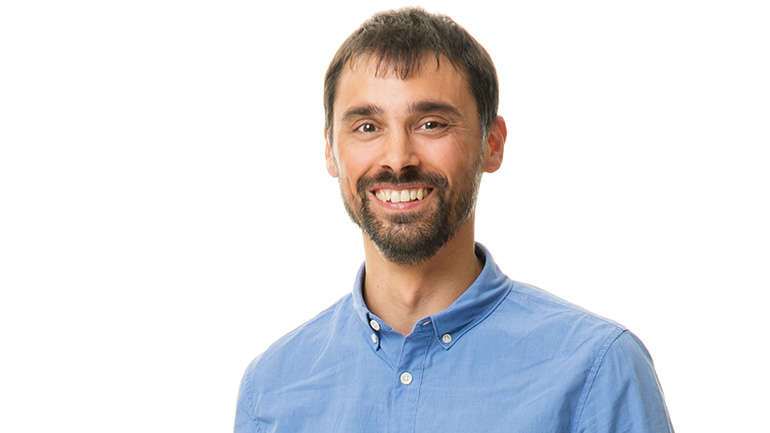
For us, Open Lab works very well. It's easy to book and get support and is obviously made for users who know how to use the instruments and how to interpret the results.
For us, Open Lab works very well. It's easy to book and get support and is obviously made for users who know how to use the instruments and how to interpret the results.
Roberto Ortiz – Senior Scientist, CR Competence
What does CR Competence do?
CR Competence is a consulting company specialised in helping our clients with issues related to colloidal systems, surfaces and physical chemistry. We help our customers with chemistry problems in their products or processes. We also perform scientific due diligence, work with product development, and with problem-solving.
How has the experience at Open Lab been for you?
For us, Open Lab works very well. It's easy to book and get support and is obviously made for users who know how to use the instruments and how to interpret the results.
We have used vpSEM-EDS in many of our projects. With that instrument, we can see what materials look like at the nanoscale and at the same time get chemical information from the surfaces. It has come into use in very different projects such as imaging the morphology of a powder for the pharmaceutical industry and for filters in a cooling system with corrosion problems.
How has Open Lab benefitted you?
Being able to access advanced measuring instruments without having to own one. Such instruments are really expensive. In our case, we only need to use them a few times a year and it wouldn't be financially viable to own one.
Facts and figures
Here, figures and facts for the year 2023 are compiled. People, partners, granted applications, distributed funds, projects and publications are presented.
Facts & Figures 2023: Biofilms Research Center
for Biointerfaces
The Research Centre in figures
-
14
Professors
-
43
PhD and Post docs
-
28
Assoc. Prof. and lecturers







